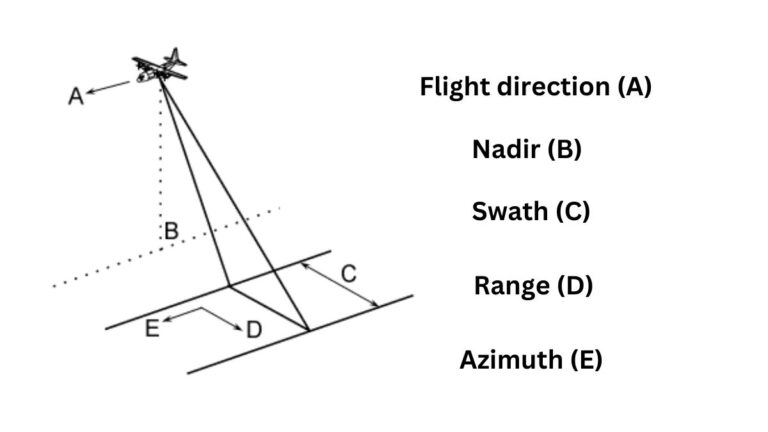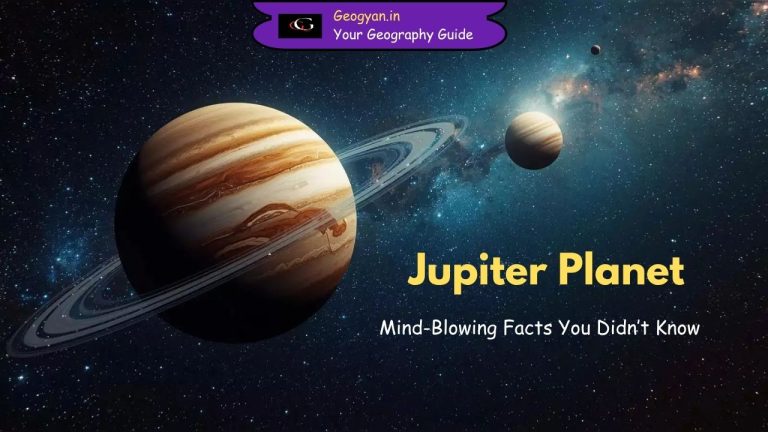Estimated reading time: 10 minutes
For students preparing for competitive exams such as UGC NET, UPSC, RPSC, KVS, NVS, DSSSB, HPSC, HTET, RTET, UPPSC, and BPSC in geography, understanding environmental issues like ozone layer depletion is crucial. Human activities causing ozone layer depletion not only impact the environment but also have extensive consequences for health and ecosystems. A thorough understanding of this concept will enhance your knowledge base and help you effectively tackle related questions in your exams.
Table of contents
- What is the Ozone Layer?
- Early Warning Signs of Ozone Depletion
- Discovery of the Ozone Hole Over Antarctica
- Multinational Efforts to Study Ozone Depletion
- The Montreal Protocol: A Landmark Agreement
- Ozone Depletion: A Global Issue
- Global Efforts to Save the Ozone Layer
- Why Ozone Layer Protection Matters
- Conclusion: Global Responsibility
- Test Your Knowledge with MCQs
- FAQs
- You Might Also Like
The depletion of the ozone layer has emerged as one of the most critical environmental challenges in recent decades. This global issue gained widespread attention due to its severe implications for life on Earth. The ozone layer serves as a protective barrier that absorbs harmful ultraviolet (UV) radiation from the Sun, ensuring that only a safe level of solar radiation reaches the Earth’s surface.
This natural shield known as “Earth’s umbrella,” is crucial for the survival of all life forms, including plants, animals, and humans. However, scientific studies and observations have shown a significant thinning of this layer, particularly over Antarctica, which has led to the formation of what is commonly referred to as the “ozone hole.”
What is the Ozone Layer?
The ozone layer is a region of the Earth’s stratosphere that contains a high concentration of ozone (O₃) molecules. It is located approximately 10 to 50 kilometers above the Earth’s surface. Ozone, a form of oxygen with three oxygen atoms, is responsible for filtering out the Sun’s harmful ultraviolet B (UVB) radiation. Without this layer, life on Earth would be exposed to much higher levels of UVB radiation, which can cause skin cancer, cataracts, immune system damage, and harm to ecosystems, including marine life and agricultural crops.
The balance within the ozone layer is vital for life on Earth. It allows the Sun’s beneficial rays, such as visible light and infrared radiation, to pass through while blocking harmful UVB rays. However, human activities, particularly the release of certain chemicals into the atmosphere, have disrupted this balance, causing a significant reduction in ozone levels, especially in the polar regions.
Early Warning Signs of Ozone Depletion
The depletion of the ozone layer first became a subject of scientific concern in the 1970s. In 1974, two atmospheric scientists, Mario Molina and Sherwood Rowland from the University of California, sounded the alarm about the potential danger posed by man made chemicals known as chlorofluorocarbons (CFCs). These chemicals, commonly used in refrigerators, air conditioners, aerosol sprays, and industrial solvents, were found to break down ozone molecules in the stratosphere. Molina and Rowland’s theoretical computer models predicted that if CFC emissions were left unchecked, they would accumulate in the atmosphere and cause significant ozone depletion.
Meanwhile, in 1967, Russia had already begun monitoring ozone levels using satellites. The data collected from NIMBUS 3, NIMBUS 4, EXPLORER 5, and TYROS 4 satellites confirmed a gradual but alarming decrease in ozone concentrations. This early satellite data showed a decline in the ozone layer, which was exacerbated by the extensive use of CFCs, halons, and other ozone depleting substances. Furthermore, nitrous oxide emissions from numerous nuclear tests conducted during the Cold War were also found to contribute to ozone depletion. When nuclear tests were banned, ozone levels began to stabilize, providing a temporary respite.
Discovery of the Ozone Hole Over Antarctica
The most significant breakthrough in understanding ozone depletion came in 1985, when British scientist Joseph Farman and his team at the British Antarctic Survey discovered an “ozone hole” over Antarctica. Their research revealed a startling 40% reduction in ozone levels in the stratosphere during the spring months. This marked the first solid evidence of a dramatic seasonal decrease in ozone, which became known as the Antarctic ozone hole. This discovery, published in the journal ‘Nature’, alerted the world to the severity of ozone depletion and its potential global consequences.
The phenomenon of the ozone hole occurs mainly during the Antarctic spring (August to October), when sunlight returns to the polar region after the long winter. During this time, chemical reactions involving CFCs and halons are triggered by the presence of chlorine and bromine, which break down ozone molecules. The depletion is most severe over Antarctica due to the formation of polar stratospheric clouds (PSCs) that facilitate the release of ozone destroying chlorine.
Multinational Efforts to Study Ozone Depletion
In response to the alarming discovery of the ozone hole, a multinational scientific expedition was launched in 1987 to study the extent of ozone depletion over Antarctica. This expedition, which involved scientists from several countries, utilized satellites, aircraft, balloons, and ground based instruments to measure ozone concentrations across a vast area—twice the size of the United States. The findings were even more concerning than previously thought. The expedition revealed that the natural concentration of ozone had dropped by 50% between August 15 and October 7, 1987. In some areas, the ozone concentration had decreased by nearly 100%, leading to the formation of large ozone free patches known as “ozone holes.”
These findings confirmed that ozone depletion was not limited to one region but was a widespread issue with potentially catastrophic effects on the entire planet.
The Montreal Protocol: A Landmark Agreement
Recognizing the urgent need for action, the international community came together to address the ozone depletion crisis. In September 1987, the “Montreal Protocol on Substances that Deplete the Ozone Layer” was signed by 35 countries. This landmark agreement, facilitated by the United Nations Environment Programme (UNEP), aimed to reduce the production and consumption of ozone depleting substances, particularly CFCs and halons.
The Montreal Protocol was the first global treaty to address an environmental issue of this magnitude. It mandated that developed countries phase out the use of CFCs and other harmful chemicals, with a gradual phaseout plan for developing nations. Over the years, the protocol has been revised and strengthened, with more chemicals added to the list of substances to be eliminated.
Ozone Depletion: A Global Issue
While early studies suggested that ozone depletion was mainly confined to the Antarctic region, later research showed that the problem extended across the globe. In 1988, the “NASA Ozone Trend Panel” (OTP) released a report based on data collected by over 100 scientists from 10 countries. The report concluded that ozone depletion was not a seasonal phenomenon limited to Antarctica but a global issue that affected the entire atmosphere.
The NASA OTP findings prompted further research, and in 1989, the “World Watch Institute” published a comprehensive report titled “State of the World,” which outlined the key environmental threats, including ozone depletion, greenhouse effects, soil erosion, deforestation, and population growth. The report emphasized the urgent need for global action to prevent further environmental degradation and protect future generations.
Global Efforts to Save the Ozone Layer
In March 1989, the United Nations organized an international conference in London, bringing together over 150 countries, including government ministers, scientists, and industry leaders. The primary objective of this conference was to develop strategies for saving the endangered ozone layer. Discussions focused on limiting the production and consumption of ozone depleting chemicals not only in developed countries but also in developing nations. The conference highlighted the need for global cooperation and the implementation of stringent measures to safeguard the ozone layer.
Why Ozone Layer Protection Matters
The depletion of the ozone layer is more than just an environmental issue—it is a threat to human health and the natural world. Increased exposure to UVB radiation can cause skin cancer, cataracts, and weaken immune systems. It also poses risks to marine life, particularly plankton, which form the basis of the ocean’s food chain. Agricultural productivity could also decline as crops become more susceptible to UV damage.
The Montreal Protocol has been a successful step toward reversing the damage caused by ozone depletion, and there is evidence that the ozone layer is slowly recovering. However, continued efforts are necessary to ensure that the layer is fully restored and that harmful emissions are kept in check.
Conclusion: Global Responsibility
The depletion of the ozone layer is a stark reminder of how human activities can disrupt natural systems with potentially devastating consequences. Protecting the ozone layer requires ongoing international collaboration and adherence to environmental regulations. The Montreal Protocol stands as a model of what can be achieved when nations come together to address a common threat. By continuing to reduce ozone depleting emissions and promoting environmentally friendly alternatives, we can ensure a safer and healthier future for all living organisms on Earth.
Test Your Knowledge with MCQs
1. The ozone layer is primarily located in which part of the Earth’s atmosphere?
A) Troposphere
B) Stratosphere
C) Mesosphere
D) Thermosphere
2. What harmful radiation does the ozone layer protect living organisms from?
A) Infrared radiation
B) Gamma rays
C) Ultraviolet radiation
D) X Rays
3. Which chemicals are primarily responsible for the depletion of the ozone layer?
A) Carbon dioxide
B) Nitrogen oxides
C) Chlorofluorocarbons (CFCs)
D) Methane
4. The discovery of the “ozone hole” over Antarctica was made in which year?
A) 1985
B) 1974
C) 1990
D) 1987
5. What is the name of the international agreement that aims to reduce the production of ozone depleting substances?
A) Paris Agreement
B) Kyoto Protocol
C) Montreal Protocol
D) Geneva Convention
6. The main consequence of ozone depletion is increased levels of which type of ultraviolet radiation?
A) UVA
B) UVB
C) UVC
D) None of the above
7. Which scientist duo first warned about the dangers of CFCs leading to ozone depletion?
A) Joseph Farman and Paul Crutzen
B) Mario Molina and Sherwood Rowland
C) Svante Arrhenius and Charles Keeling
D) James Lovelock and Carl Sagan
8. Ozone Depleting substances were commonly used in which products before regulations were implemented?
A) Refrigerators and air conditioners
B) Solar panels
C) Water purifiers
D) Electric vehicles
9. The term “ozone hole” refers to:
A) A complete absence of ozone in certain regions
B) A significant thinning of the ozone layer
C) A temporary increase in ozone levels
D) Increased solar radiation
10. Which organization facilitated the Montreal Protocol to combat ozone depletion?
A) World Health Organization (WHO)
B) United Nations Environment Programme (UNEP)
C) World Meteorological Organization (WMO)
D) International Union for Conservation of Nature (IUCN)
Answers:
1. B) Stratosphere
2. C) Ultraviolet radiation
3. C) Chlorofluorocarbons (CFCs)
4. A) 1985
5. C) Montreal Protocol
6. B) UVB
7. B) Mario Molina and Sherwood Rowland
8. A) Refrigerators and air conditioners
9. B) A significant thinning of the ozone layer
10. B) United Nations Environment Programme (UNEP)
FAQs
Ozone depletion is primarily caused by human-made chemicals such as chlorofluorocarbons (CFCs), halons, and other ozone-depleting substances (ODS). These chemicals release chlorine and bromine atoms in the stratosphere, which break down ozone molecules. This depletion increases harmful UV radiation reaching the Earth’s surface, leading to health issues like skin cancer and cataracts, and negatively impacting ecosystems and wildlife.
To protect the ozone layer, international agreements like the Montreal Protocol have been established. Signed in 1987, the Montreal Protocol aims to phase out the production and use of ozone-depleting substances (ODS). Countries worldwide have committed to reducing and eventually eliminating the use of CFCs, halons, and other harmful chemicals. These efforts have led to a gradual recovery of the ozone layer, demonstrating the effectiveness of global cooperation in addressing environmental issues.
The ozone layer benefits human health by absorbing most of the Sun’s harmful ultraviolet (UV) radiation. This protection reduces the risk of skin cancer, sunburn, and cataracts, which can result from excessive UV exposure. Additionally, it helps prevent immune system suppression and protects the delicate balance of ecosystems. By filtering out harmful UV rays, the ozone layer plays a vital role in maintaining overall public health and environmental stability.





























